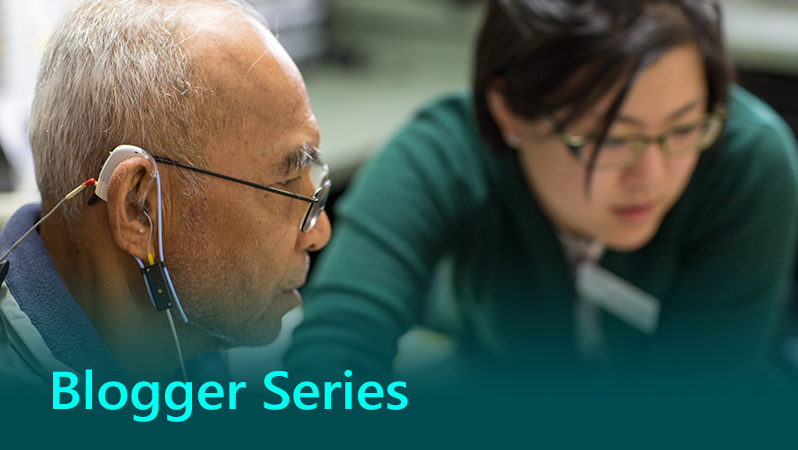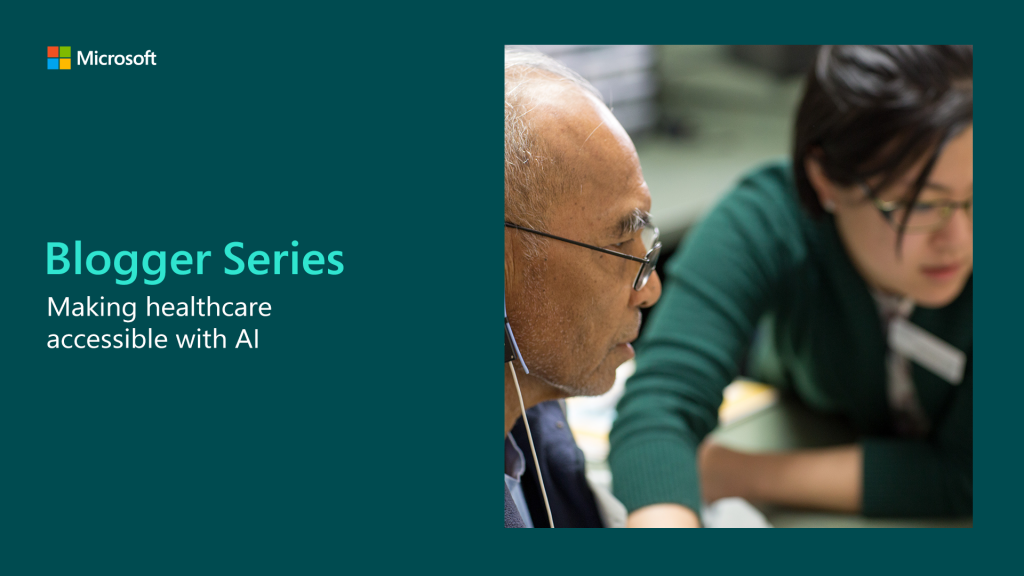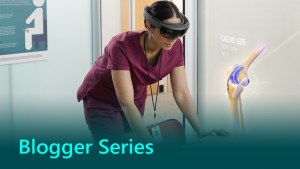
Making healthcare accessible with AI

‘Empowering every healthcare employee and patient to do more.’
I’m immensely proud to work for a company like Microsoft that takes this literally. Every person means every person regardless of their abilities.
Inclusivity and accessibility are key features to the products we offer – and something we build in from the start. AI can have a huge impact on accessibility across the world and is transforming at speed the way our products can help everyone to achieve more.
Microsoft takes accessibility seriously. As a result we’ve launched the AI for Accessibility accelerator programme which is designed to help organisations harness the power of AI to amplify human capability. The programme provides successful participants with grants, investments of technology, and expertise to help them bring their AI solution to life. With more than one billion people around the world living with disabilities, it’s important we use technology to help.
[msce_cta layout=”image_center” align=”center” linktype=”blue” imageurl=”https://www.microsoft.com/en-gb/industry/blog/wp-content/uploads/sites/22/2018/12/ACC18_Erika_021.jpg” linkurl=”https://www.microsoft.com/en-us/ai-for-accessibility” linkscreenreadertext=”AI for Accessibility ” linktext=”AI for Accessibility ” imageid=”6292″ ][/msce_cta]
AI powering accessibility in healthcare
One of the use cases for AI is to aid accessibility in healthcare. In the NHS, the Accessibility Information Standard requires all organisations to ensure all patients can access and understand the information they’re given. Microsoft Azure Cognitive Services allow NHS Trusts to make their own data and patient information more accessible for everyone.
These cognitive services can be used by someone with impaired sight to understand their environment. The Seeing AI app narrates the visual world for people who are visually impaired. With this intelligent camera app, you just hold up your phone and hear information about the world around you.
“Seeing AI could read prescription data for a patient, recognise carers, and read barcodes to identify the correct medication. It can really have a big impact on the visually impaired and their self-care and independence.”
-Hector Minto, Microsoft Accessibility Evangelist
Another great example is Helpicto which helps children with autism communicate with their environment. Helpicto uses AI to translate speech to pictograms and vice versa. This means children with autism who struggle to communicate or verbalise can interact with their carers, doctors, and others easily. Using Cognitive Services, Bing Speech API, and Azure functions, Helpicto hope to eventually offer the app to others who find communicating verbally difficult, such as those suffering from Alzheimer’s disease.
Hector goes on to explain: “All the individual channels used in these apps are simply bits of code that can be used by developers to deliver accessible experiences for people with disabilities in healthcare. This is an invitation for people to look at AI and how they would use it to improve the patient experience, including employees with disabilities within the NHS.”
These same tools are used within Microsoft own product sets. Office 365 keyboard shortcuts and screen readers make Office apps accessible to users who are vision impaired. You can use MailTip in Outlook on the web to inform co-workers of your preference for accessible content. This prompt reminds them to run the inbuilt Accessibility Checker before sending an email to you and fix anything that isn’t accessible.
We’re all responsible for improving accessibility
Accessibility is everyone’s responsibility. I need to be responsible and thoughtful to my colleagues and customers to ensure that my work is as inclusive and accessible as possible. The same goes for every organisation. The NHS is the absolute best place to start. They already have incredible accessibility features in place for their patients but going digital can deliver extra benefits for accessibility of their services.
Using video consultations in healthcare care is not new. At SW Georges Mental Health Trust, they’ve made their video consultations even more accessible for those who are hearing-impaired.
Kevin Buckle is a community support worker. He highlights the benefit: “Deaf people do not normally have English as their first language, so video conferencing allow you to have a consultation directly using a visual medium, using sign language making it easier to connect.”
However, AI has now taken this concept one step further. Presentation Translator, an add-in for PowerPoint breaks down the language barrier by allowing users to offer live, subtitled presentations. As you speak, subtitles can be displayed directly on your screen which can be used for audiences who are hearing impaired.
Additionally, up to 100 audience members in the room can follow along with the presentation in their own language, including the speaker’s language, on their phone, tablet or computer.
Thanks to Office 365, you have some great tools at hand to help you get started.
[msce_cta layout=”image_center” align=”center” linktype=”blue” imageurl=”https://www.microsoft.com/en-gb/industry/blog/wp-content/uploads/sites/22/2018/12/ACC18_Bernardo_029.jpg” linkurl=”https://www.microsoft.com/en-gb/industry/blog/industry/cross-industry/creating-a-better-future-through-accessibility-and-inclusion/” linkscreenreadertext=”Creating a better future through accessibility and inclusion” linktext=”Help create a better future together” imageid=”6286″ ][/msce_cta]
About the author
Kelly is the Healthcare Industry Manager at Microsoft UK, working with transformational digital partners and NHS customers to pilot solutions for collaborative working and empowering everyone to do more. She has 15 years’ experience working alongside the NHS, and is passionate about the power technology has to create positive change in healthcare.






